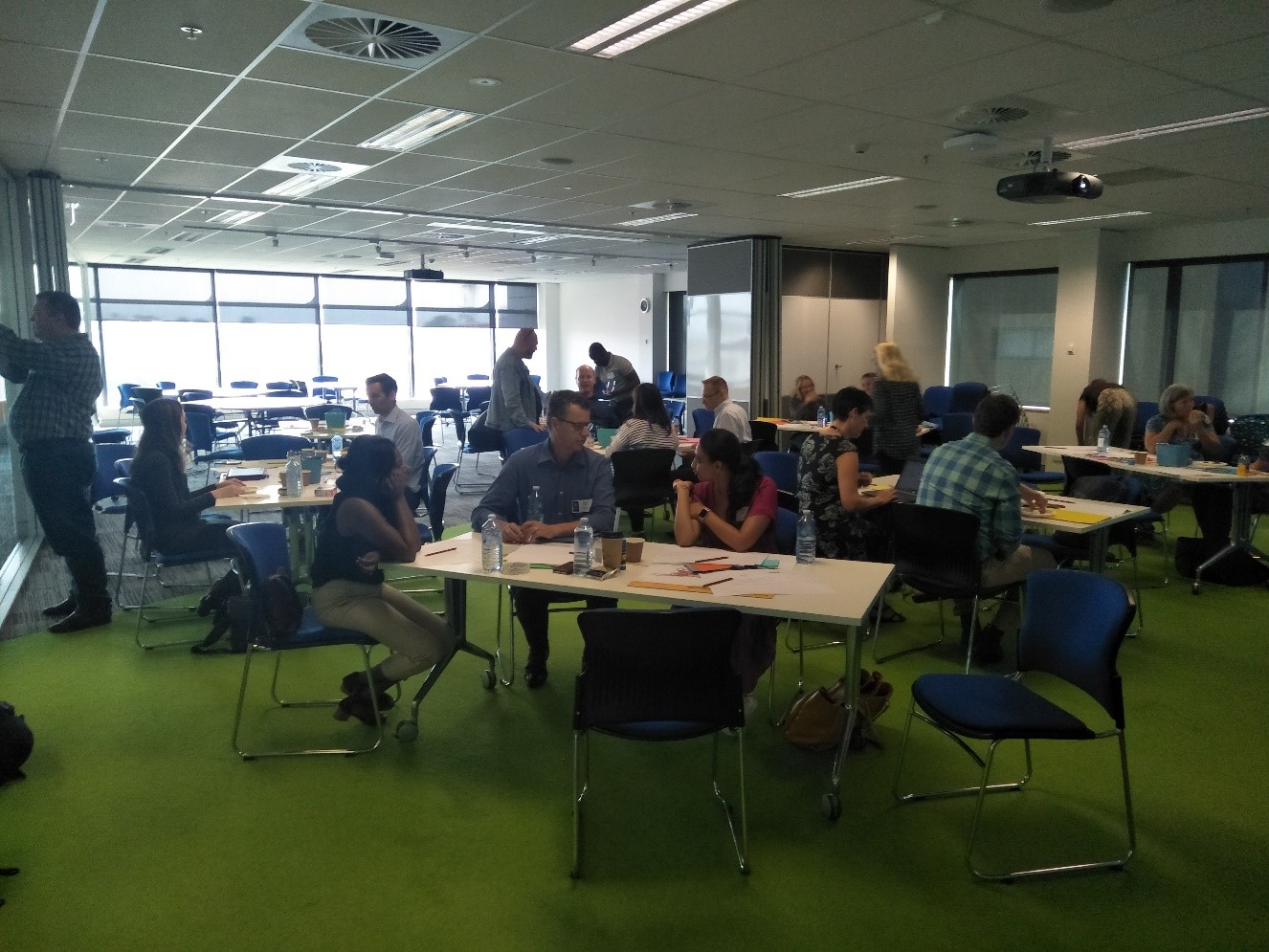By Steven Kickbusch, Briony Wainman, Roger Cook, Sharon Altena, & Henk Huijser
a two-minute read
For the latest Meet-Up of TELedvisors, which was held in November last year at QUT’s Kelvin Grove campus, we decided to do something different and have a more focused workshop facilitated by Dr Natalie Wright and Steven Kickbusch. The focus was on Design Thinking, which is Natalie’s specialisation (she is a Past National Director and Past President (Queensland Branch) of the Design Institute of Australia (DIA)), and an important part of Steven’s PhD research.
The workshop brought together TELedvisors from QUT, Griffith, UQ and USC for an intensive but very useful afternoon of discussion and application of design approaches, which turned out to be highly relevant to the work of many TELedvisors, as we discovered.
After the two-hour workshop some of the participants retired down the road for a refreshing beverage, as the social agenda is an important element of these state-based Meet-Ups.

Workshop overview
The workshop took participants through a rapid design thinking process based on the model espoused by the Stanford d.School.

The workshop led participants through practical activities that forced them to make decisions along the path of problem finding, problem reframing and solution finding to address real problems that they faced in their own institutions.

The session gave attendees a broad understanding of how design thinking might enrich the work they do and empowered them by demonstrating how they might apply the process in their roles at their own institutions with clients or students in order to create positive change and generate more inclusive and innovative ideas.
Identifying roles in design: relevance for TELedvisors
The activity enabled participants to experience a fast-paced approach to reflecting on their own experience and expertise as it relates design roles in the “third space”. Importance was given to understanding the needs of students and key stakeholders in the design process, leading to personalised, bespoke and negotiated outcomes.

Reflections on the session and future directions
Overall, I felt that this was a novel approach for a TELedvisors Meet-Up. Being able to pursue a specific project through each of the Design Thinking steps in a limited time was remarkably productive. Perhaps we might consider adopting this strategy in some future meetups by applying a different framework or pedagogy to an authentic project to gain a different perspective on our practice.
Useful references
- Kelly, N., Russell, N., Kickbusch, S., Barros, A., Dawes, L. & Rasmussen, R. (2018). Online communities of teachers to support situational knowledge: A design-based study. Australasian Journal of Educational Technology, 34(5), 150-166). https://doi.org/10.14742/ajet.3867
- Wright, N. & Wrigley, C. (2019). Broadening design-led education horizons: conceptual insights and future research directions. International Journal of Technology and Design Education, 29(1), 1-23 https://eprints.qut.edu.au/113978/

2 responses to “Design thinking for teledvisors”
Thanks Henk! Big fan of Design Thinking and session provided me with lots of affirming moments. It was great confirmation for USC that we were on the same page as our bigger metropolitan colleagues with this approach to ED/LD work. Thanks again for organising the meet up!
Thanks Angela, good to hear you enjoyed it! 😊